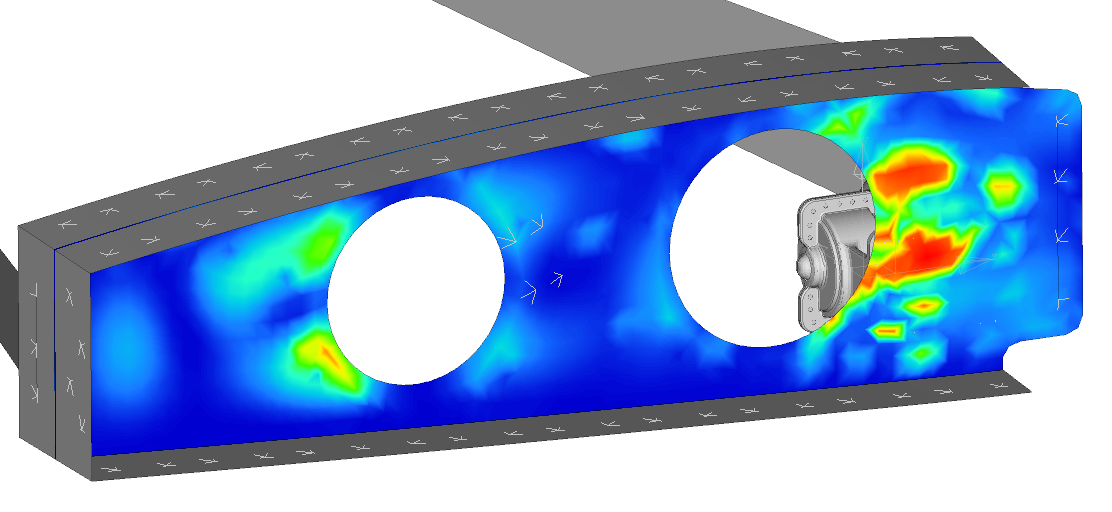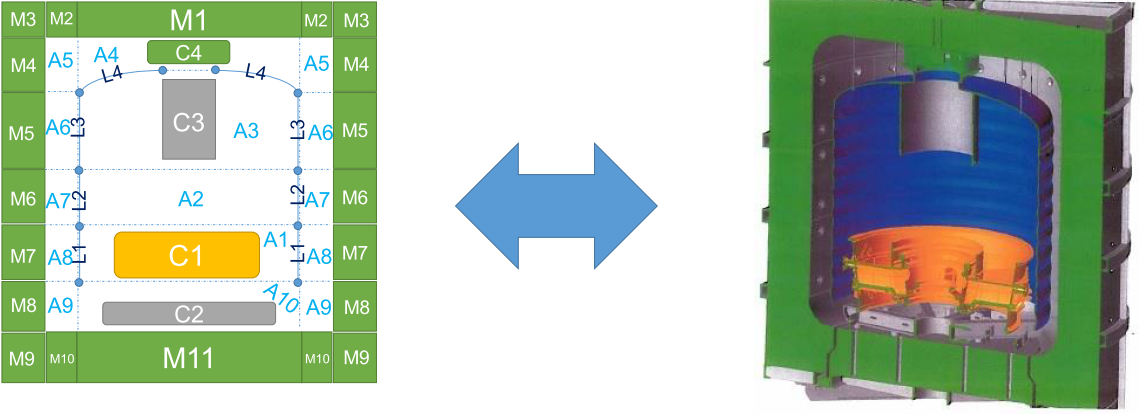Thought Leader Thursday: How Can CAE Engineers Use Multiphysics in the Engineering Design Process?
According to Wikipedia, “Multiphysics is a computational discipline which treats simulations that involve multiple physical models or multiple simultaneous physical phenomena. For example, combining chemical kinetics and fluid mechanics or combining finite elements with molecular dynamics. Multiphysics typically involves solving coupled systems of partial differential equations.”
What does this imply for the CAE engineers?
Indeed, to design most products, multiple physics need to be considered: an engine always heats and vibrates; a motor provides torque but also causes vibration and noise and so on…
In almost all practical processes, but even more so in engineering design process, “simpler is always better”. To simplify the engineering design process, historically each phenomenon is split among teams and disciplines so that each aspect of the design is handled by the right specialist. These specialists then meet to come up with a compromised design between conflicting requirements.
However in some cases, this is not possible, and in others, it is not ideal. The first case applies when interactions between multiple physics is key to solve a given problem, such as the need to solve structural analysis and fluid dynamic in aircraft ditching, airbag deployment. The second case applies when interactions must be taken into account to avoid conservative and therefore badly optimized products, especially if the two physics lead to conflicting specifications as in motor design.
The need for more and more power efficient, safer, lighter and greener products combined with more and more efficient CAE tools and optimization solvers such as the ones available in Altair’s HyperWorks suite, as well as the availability of more powerful computational resources imply that multiphysics problems are more and more part of the CAE engineer’s life.
CAE engineers are therefore facing a challenge: providing optimized designs involving various interacting and often complex physical phenomenon while still keeping the design process as simple, fast and efficient as possible.
Below are examples of multiphysics applications where different approaches were used to solve them with accuracy while adhering to the principle of “simple is always better”.
Ditching or sloshing simulations are two examples of quickly maturing multiphysics simulations leading to safer structures. In these cases, the structural behavior and possible failures depend on the flow of water around the structure, which in turn is highly dependent on the structural movement or deformation. The maturity of the process is the outcome of a joint effort between RADIOSS development team and research programs. This way, the accuracy of the simulation was proved and options to ease the work of the engineers were introduced. As an example, the meshing of water does not have to take into account the shape of the structure, as they can be meshed separately and their interactions are calculated with Coupled Euler Lagrange interfaces.
[video width="1920" height="1080" mp4="/videos/default-source/news-videos/ditching.mp4"][/video]
Airbag deployment is another case of strong fluid structure interaction coupling, as deployment depends simultaneously on the behavior of the tissue and the behavior of the fluid inside the airbag. The Finite Volume Method insures the quality of the fluid flow in the airbag during deployment while an accurate material law takes into account the complex behavior of the tissue, including fibers rotations.
[video width="1920" height="1080" mp4="/videos/default-source/news-videos/airbag-deployment.mp4"][/video]
For the two cases above, RADIOSS features accurate, fast and efficient solution techniques to deal with both phenomenon at the same time. A similar situation exists in aero-elasticity, where both fluid flow around the body and the body’s vibration must be taken into account. This requires an accurate steady state fluid simulation coupled with an accurate vibration model of the wing, which is possible in HyperWorks using OptiStruct and AcuSolve P-FSI functionality. Moreover, with HyperStudy’s design exploration techniques, it is then possible to optimize the winglet, reducing both the mass and flutter while retaining similar aerodynamic performances.
[video width="1920" height="1080" mp4="/videos/default-source/news-videos/aerelasticity.mp4"][/video]
Sequential coupling is possible if one physics can be solved after the other. This is the case for motor design where electromagnetics coupled with structure or fluids as outlined in the below example. The calculation of the noise generated by the fuel pump is performed in two steps. First, Flux is used to calculate the torque of the motor and the forces that the motor applies to the structure. Optistruct then uses those forces to calculate the induced noise. The entire process is integrated in HyperStudy to optimize the motor design such as the induced noise is minimized for a required torque.

3D solvers require lot of resources which are not always available, especially during an optimization process, where lots of iterations are required. That’s where 1D simulations are useful. This is especially the case where one or all the physics can be approximated by 1D equations or analytical formulas.
In the below example, a furnace cooldown simulation, the 3D thermo-fluid simulation is replaced with an analytical model based on heat transfer equations, and parameters identified from the 3D AcuSolve simulations. In this case, the analytical model is implemented in Activate, HyperWorks’ system simulation software.
When the iterations are performed, the new design performances are verified once again with 3D CFD simulations in AcuSolve. This type of process is an optimal combination of 1D modelling for fast calculations and 3D simulations when accuracy is required.
In conclusion, there are multiple ways to simulate a multiphysics problem. In addition to “classical” co-simulations or sequential coupling, it is also possible to use faster 1D simulations to simplify part or all the physics to capture the general trends of the phenomenon and use 3D solvers to provide high accuracy and predictive results.
Learn more about Multiphysics by checking out our on-demand 2017 Multiphysics
Webinars: http://web2.altairhyperworks.com/altair-multiphysics-webinar-series-2017





